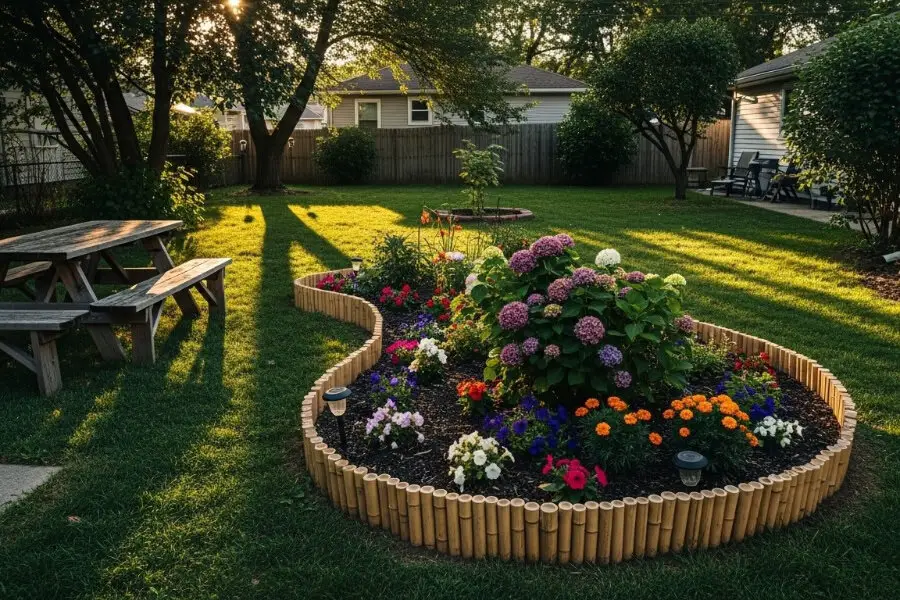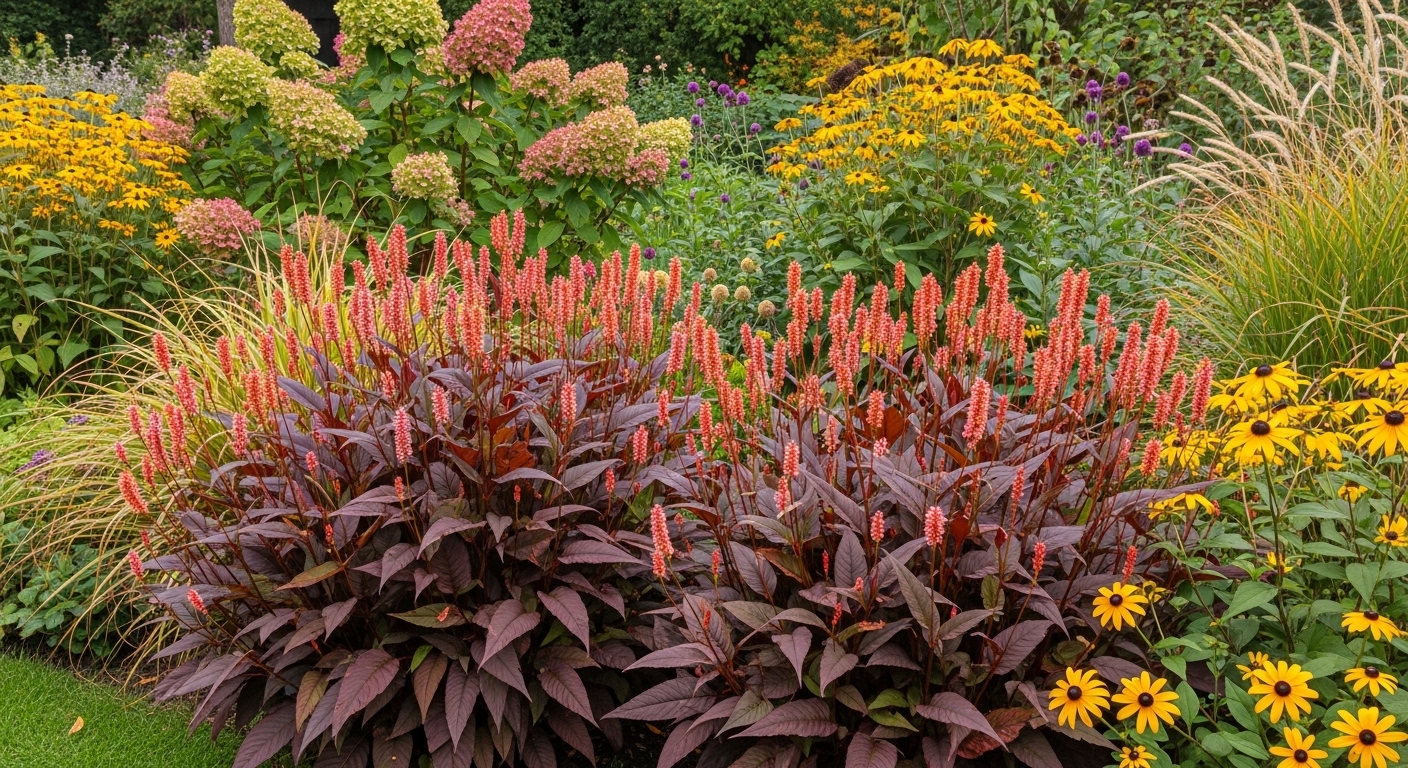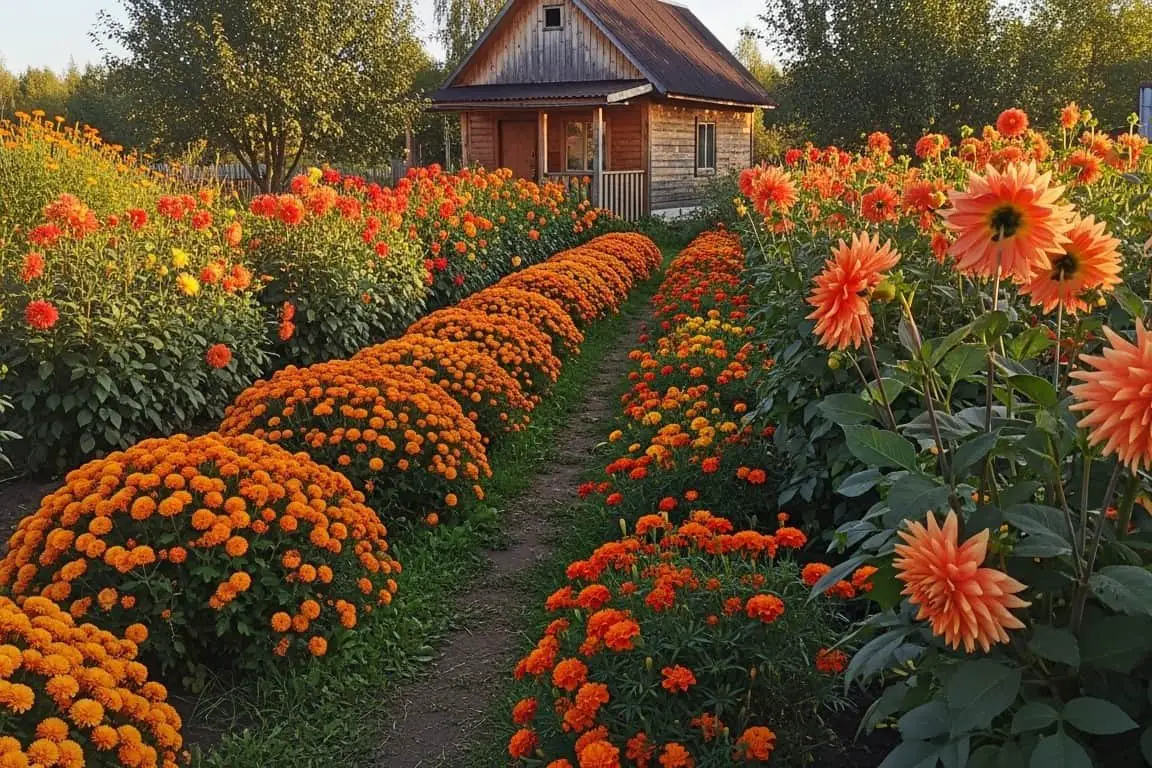Is your hydrangea dead or dormant? Many gardeners struggle to tell the difference, especially in colder seasons. This guide will help you spot signs of life and offer tips to care for your plant.
Keep reading to save your hydrangea!
Contents
Signs that a hydrangea might be dead
A dead hydrangea often loses its color and shows no signs of life. Its stems may feel dry and snap easily.

Brittle, brown stems and dry leaves
Brittle, brown stems that snap easily point to a dead hydrangea. Healthy stems have flexibility and some moisture inside. Dead ones feel dry, break with light pressure, and show no sap when cut.
Dry, brown leaves often mean desiccation or plant death. If both the stems and leaves are like this, the hydrangea is likely lifeless. Check for green growth to confirm if any part of it still survives.
Lack of leaves in spring and summer
Dry, brittle stems may lead to another concern: no leaves during spring or summer. Healthy hydrangeas should show green growth in these active seasons. If a plant stays bare while others thrive, it could signal trouble.
Weather changes often cause delays in leaf growth. Late frosts or uneven temperatures can damage buds and halt development. A persistently bare plant, despite good care and conditions, raises concerns about its health.
Regular garden monitoring helps spot this issue early.
Persistently wilted appearance
A lack of leaves may already suggest trouble, but persistently wilted hydrangeas show deeper concerns. Even after thorough watering, if the plant stays limp and does not perk up, there might be irreparable root damage.
Overwatering can suffocate roots, while dryness from extreme heat or poor care can worsen the problem.
Wilting that continues despite proper attention signals possible environmental stress or damaged roots. Stressors like transplanting without enough water, animal damage, or prolonged neglect often lead to this state.
If no improvement happens within a couple of weeks of proper care, the plant might no longer recover. Chronic wilting is usually hard to reverse once severe harm sets in.
Signs of a dormant but alive hydrangea
Dormant hydrangeas may look lifeless, but they often show small signs of life. Check the stems closely for hidden clues of growth and flexibility.

Presence of buds on stems
Buds on hydrangea stems show the plant is alive. These small bumps signal energy conservation for a new growth cycle. Even if the plant looks dry, buds mean it is preparing to renew itself.
Dormant plants often keep visible buds through seasonal changes. The stems may look lifeless in winter, but budding proves stem development and health are intact. Look closely; those buds reveal life waiting to bloom!
Flexible stems that don’t snap when bent
Stems that easily bend without snapping show the hydrangea is dormant, not dead. This flexibility points to moisture inside, which signals life and plant health. Dry stems would break instead of bending.
Dormant hydrangeas often have resilient stems even in winter. These flexible parts hold signs of survival despite a lack of visible growth. Healthy stems like this can support new buds as seasons change.
Common reasons for hydrangea death
Hydrangeas can struggle due to poor care or extreme conditions. Small mistakes in watering or pruning may lead to serious damage.
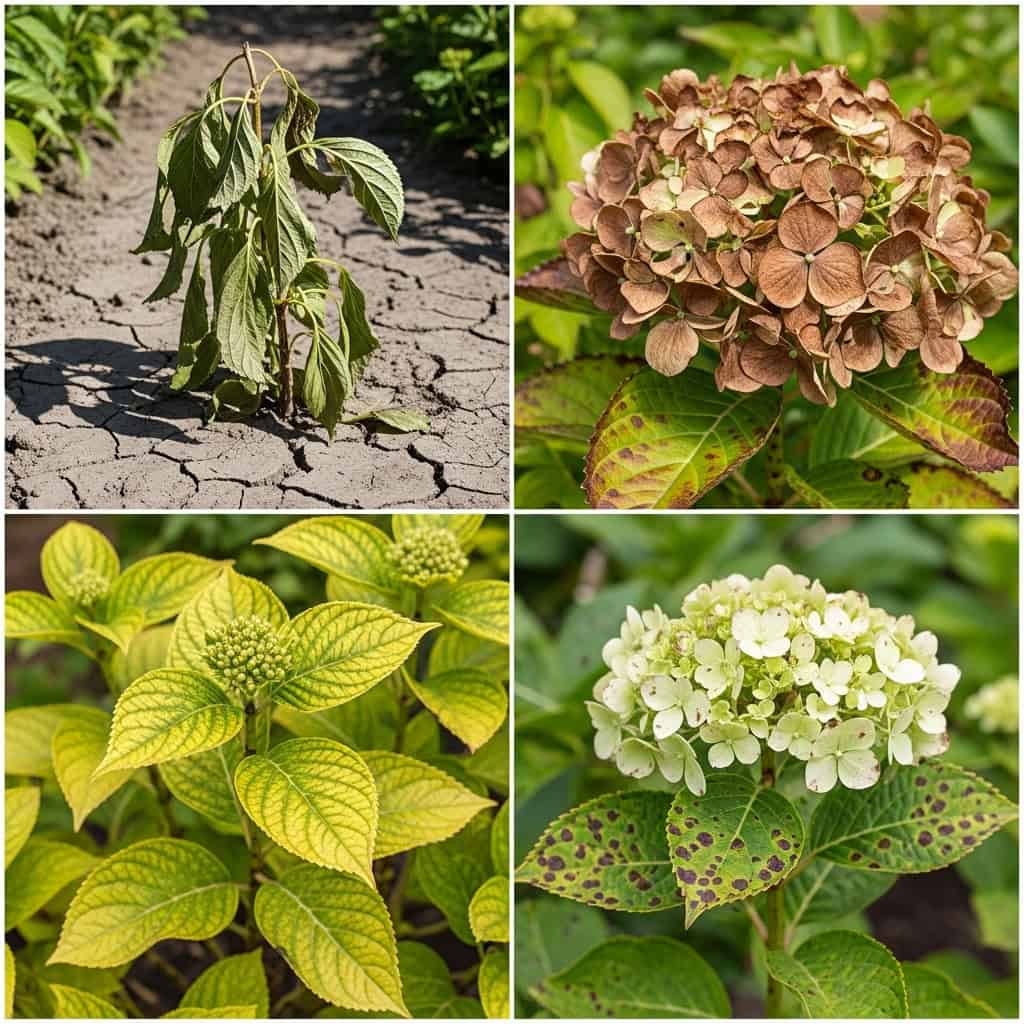
Insufficient watering
Lack of water causes major stress to hydrangeas. These plants need consistent moisture, especially in sunny spots or during hot weather. Dehydration leads to wilting, brown stems, and dried-up blooms.
Without enough watering, soil dries out fast, and roots struggle to absorb hydration.
Drought makes their health decline quickly. Dry soil weakens them over time. Regular irrigation is crucial for survival and blooming success. Follow with care about overwatering next!
Overwatering
Too much water can harm hydrangeas. Overwatering keeps the soil too wet, stopping roots from working correctly. This leads to root rot, a deadly problem for the plant.
Soggy soil prevents roots from getting air or nutrients. Fungal infections often follow, causing wilting and leaf yellowing. Poor drainage makes things worse by trapping extra water around the roots.
Over pruning
Cutting too much can harm the hydrangea’s health. Aggressive pruning removes flower buds, stopping blooms for the next year. It also takes away essential tissue needed for growth and survival.
Severe cutting may weaken or even kill the plant. This can happen if vital parts of the stem are removed. Pruning should be done carefully to protect future blooms and maintain plant health.
Moving on, let’s explore other common reasons for hydrangea death.
Extreme heat
Extreme heat harms hydrangeas quickly. They struggle during heatwaves, especially without enough water. Hot weather dries the soil, causing moisture loss and wilting. Leaves droop, turn brown, or even fall off entirely.
If ignored, the plant may die from heat stress.
Sun exposure worsens the damage. Direct sunlight intensifies temperature spikes and dries out roots faster. Constant hydration is crucial to help the plant survive high temperatures.
Fluctuating hot days can also confuse growth patterns, leading to stunted flowers or no blooms at all. Proper care reduces these risks greatly during summer months.
Neglecting to water after transplanting
Newly transplanted hydrangeas need water to survive. Their roots struggle to absorb moisture after moving, which increases drought stress. Without enough hydration, the plant may wilt quickly or even die.
Soil around the roots must stay moist to avoid transplant shock. This critical period determines survival rates. Gardeners should check soil moisture daily and water deeply as needed.
Damage from animals
Deer and groundhogs often harm hydrangeas. They can nibble on leaves, stems, or even eat the roots. This type of root destruction weakens the plant’s health and can lead to its death.
Garden pests also attack these landscape plants. Insects may chew on tender parts, causing damage over time. Protecting against wildlife threats helps maintain plant health and ensure flora survival.
How to revive wilted hydrangeas
Check the plant’s water and light needs, then make simple changes to boost its health.
Water correctly

Hydrangeas need proper hydration to thrive. Dry soil can lead to drooping leaves and brittle stems, while soggy roots from overwatering may cause root rot. For underwatered plants, a deep soaking helps restore moisture.
Pour water slowly around the base until the soil is damp but not waterlogged.
Overwatered hydrangeas might require repotting into fresh, well-draining soil. Good drainage prevents standing water that suffocates roots. Adjust watering schedules based on the season; less in cooler months and more during hot or dry periods.
Moving ahead, location adjustments play a big role in plant health too.
Adjust location or watering practices
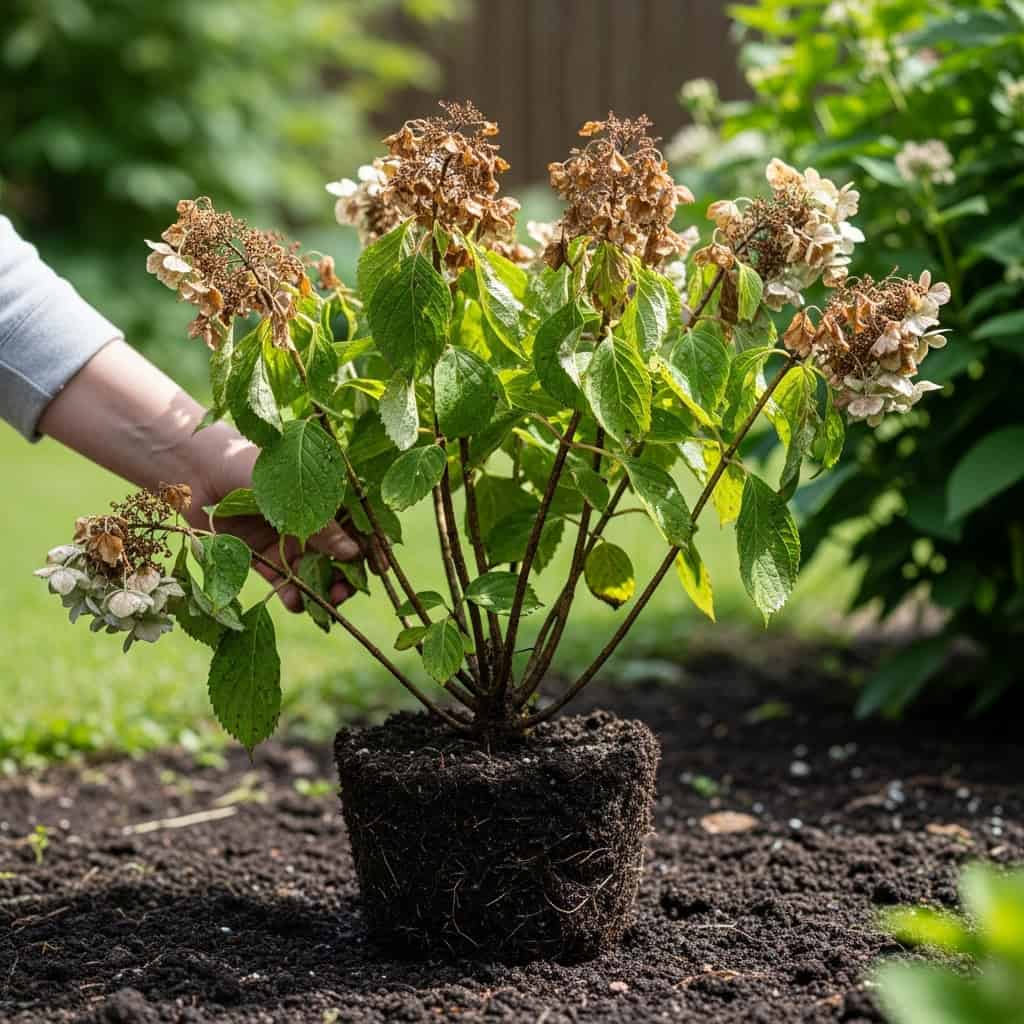
Too much sun or heat can stress hydrangeas. Moving the plant to an area with morning sunlight and afternoon shade can help. If relocation isn’t possible, add a shade cloth during peak heat hours.
Improper watering may worsen wilting. Check soil moisture regularly by touching it. Water deeply but not too often to avoid soggy roots. Adjust timing based on environmental conditions like heat or drought for better hydration and revitalization.
Conclusion
A lifeless hydrangea might just be taking a nap. Dormancy is often mistaken for death, especially in colder months. Check stems and buds closely before you assume the worst. Proper care can bring struggling plants back to life.
With patience and the right steps, your hydrangea might bloom again!
FAQs
1. How can I tell if my hydrangea is dead or dormant?
Check the stems and branches. If they are brittle, dry, and snap easily, your plant may be dead. Dormant hydrangeas usually have flexible stems with some green inside when scratched lightly.
2. What should I do if my hydrangea looks lifeless in winter?
Hydrangeas often go dormant in winter to protect themselves from cold weather. Leave the plant alone until spring, then check for new growth before deciding it’s dead.
3. Can pruning help me figure out if my hydrangea is still alive?
Yes, trimming back a small section of a branch can reveal its condition. Green tissue under the bark means it’s alive; brown or dry wood might mean that part of the plant is dead.
4. Are there specific signs of dormancy in hydrangeas during colder months?
Yes, leaves will fall off as part of dormancy, but healthy roots remain active underground even though the top appears bare or lifeless during this time.


